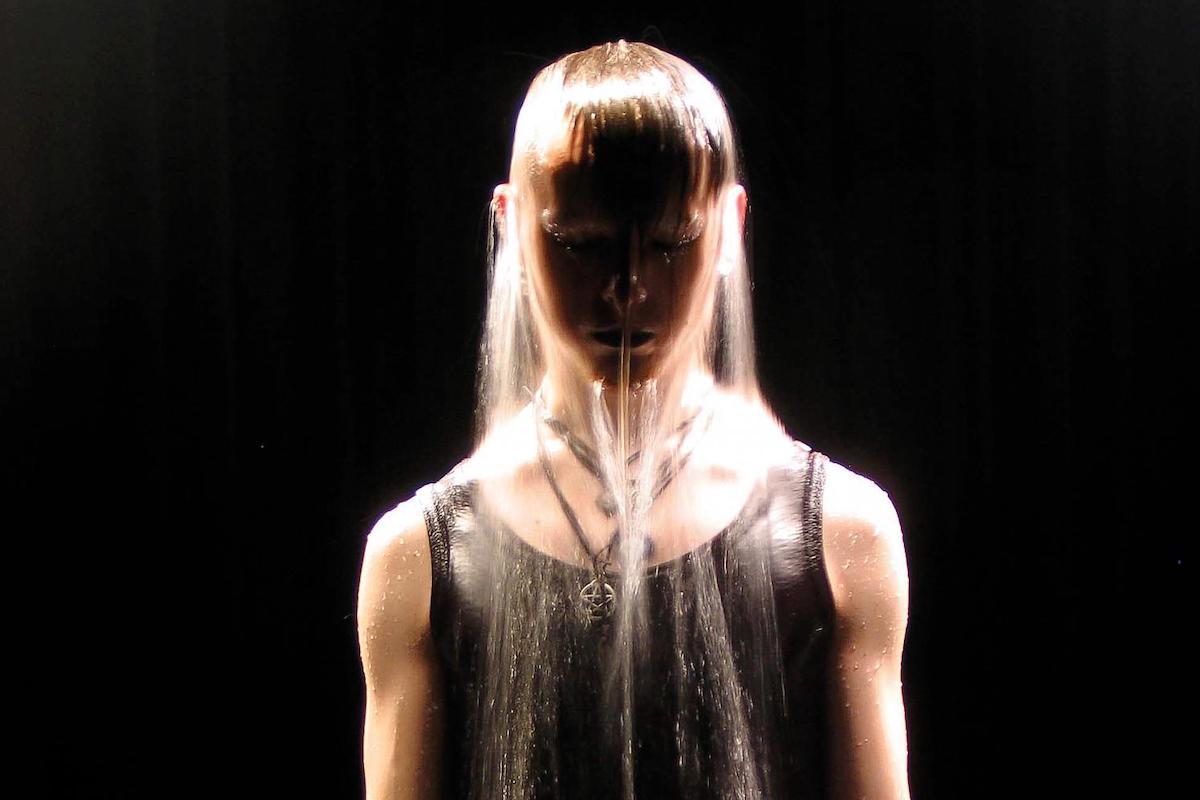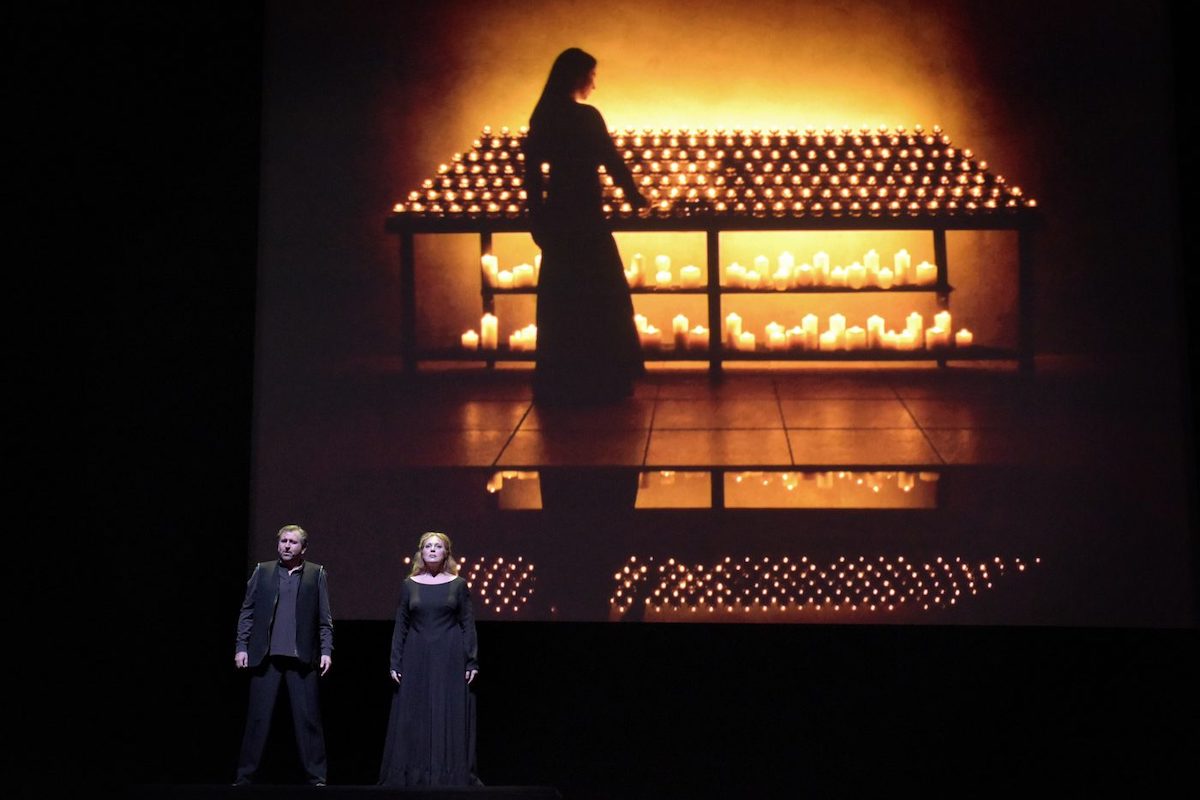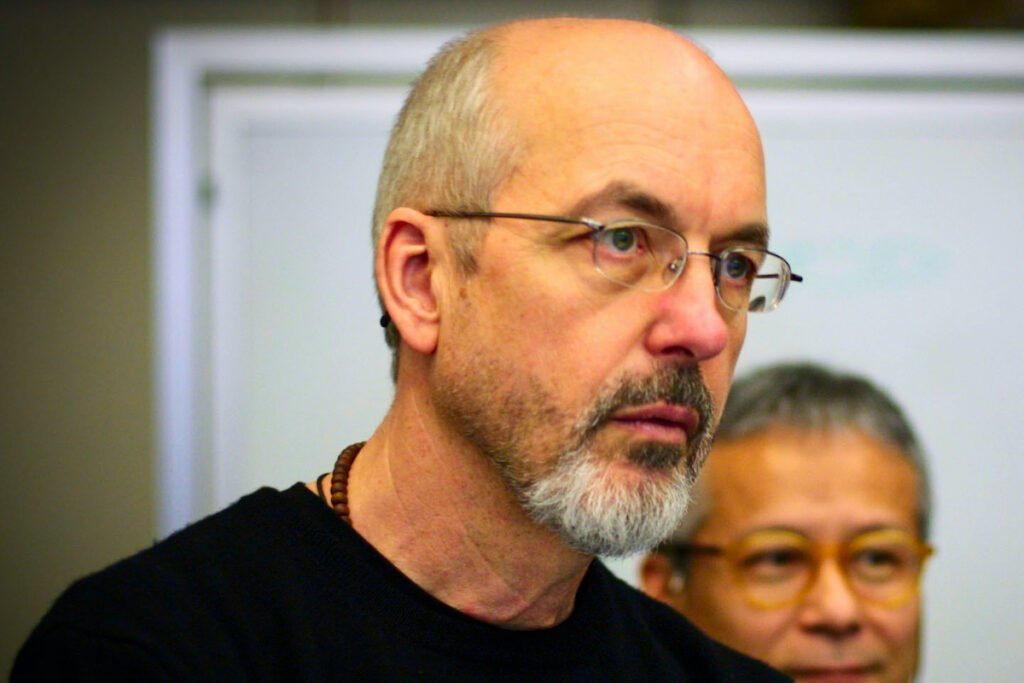The American contemporary artist Bill Viola has died, aged 73.
A pioneering force in the realms of new media, video, and installation art, Viola’s work was characterised by his use of immersive video and soundscapes. By meticulously slowing down images, Viola felt he was able to offer glimpses into what he called “the unfolding of consciousness” and “the revelation of beauty.”
His works have been shown in major Australian institutions including the National Gallery of Victoria, the Art Gallery of South Australia, the Art Gallery of New South Wales and the Australian Centre for the Moving Image.

Bill Viola, 1951–2024.
Born in 1951 in Queens, New York, Viola graduated from Syracuse University in 1973, where influential figures such as Jack Nelson, David Ross, Peter Campus, and Nam June Paik shaped his artistic vision.
His career took off in the mid-1970s with his first major installation, Il Vapore, in Florence, Italy. It was during this period that Viola began his extensive travels, capturing traditional performances and rituals in remote locations such as the Solomon Islands and Indonesia.
In 1977, Viola was invited to Melbourne, Australia by Kira Perov, then a director of cultural activities at La Trobe University. The following year, Perov joined him in New York. They married and began a lifelong collaboration. Over the years, the pair travelled the globe experiencing the winter prairie landscape in Saskatchewan, Canada; the Sahara Desert in Tunisia; and rituals in Tibetan Buddhist Monasteries in the Himalayas all the while recording images that would feature in artworks throughout his career.
During 1980/1 in Japan on a fellowship from Sony, the couple spent a year and a half studying Zen Buddhism and advanced video editing techniques. In 1981, Viola and Perov settled in Long Beach, California, where their two sons Blake and Andrei Viola were born.
In 1985, Viola was invited to participate in the Whitney Biennial by curator John Hanhardt, an early supporter of the artist’s work. Hanhardt commissioned Theater of Memory, which was the first time-based, media work to be installed alongside paintings and sculpture at a biennial.
Viola’s work went on to reach a global audience. He represented the United States at the 46th Venice Biennale in 1995 where his landmark work The Greeting was installed. In 1997 the Whitney Museum of American Art presented Bill Viola: A 25-Year Survey, an exhibition of 16 installation works that travelled for two years to six museums in the US and Europe.
Viola never stopped pushing the technical limits of his practice. In 2002 his first work in high-definition video, Going Forth By Day, was commissioned by the Deutsche Guggenheim Berlin and Guggenheim Museum, New York. A five-part “fresco”, it represented the cycle of life, from birth to death with moments of joy and sorrow.

Bill Viola: Ocean without a Shore (detail)
In 2007, he presented Ocean without a Shore at the 52nd Venice Biennale. It was seen by over 60,000 viewers over the course of the presentation. In 2006, his exhibition Hatsu-Yume (First Dream) at Tokyo’s Mori Art Museum attracted over 340,000 visitors. In 2017 Guggenheim Bilbao Museum presented a retrospective of works ranging from 1976 to 2014, the largest show to date, with the greatest attendance at 710,995 visitors.
Viola’s experience of early of avant-garde music led to collaborations with the Ensemble Modern in Frankfurt in 1994, with the industrial rock band Nine Inch Nails in 2000, and in 2004 with director Peter Sellars and conductor Esa-Pekka Salonen on a new production of Richard Wagner’s Tristan und Isolde. The opera has toured internationally after premiers by the Los Angeles Philharmonic, the Opéra National de Paris, Bastille, and the Lincoln Center for the Performing Arts, New York.

Bill Viola: Tristan und Isolde
Viola’s popularity stretched beyond the art world as his work found itself in unexpected places. He was commissioned for the 2004 Olympics in Greece for which he produced The Raft. In 2012 Viola and Perov went to El Mirage Dry Lake in the Mojave Desert of California to record Crossroads, a massive installation for the Hamad International Airport, Qatar. In 2014 he completed the first of two video commissions for St. Paul’s Cathedral, London, the first permanent installations of video art in a Church of England cathedral.
Viola died on 12 July at his home, succumbing to Alzheimer’s Disease. He is survived by Kira Perov, his sons, Blake and Andrei Viola; and daughter-in-law, Aileen Milliman.







